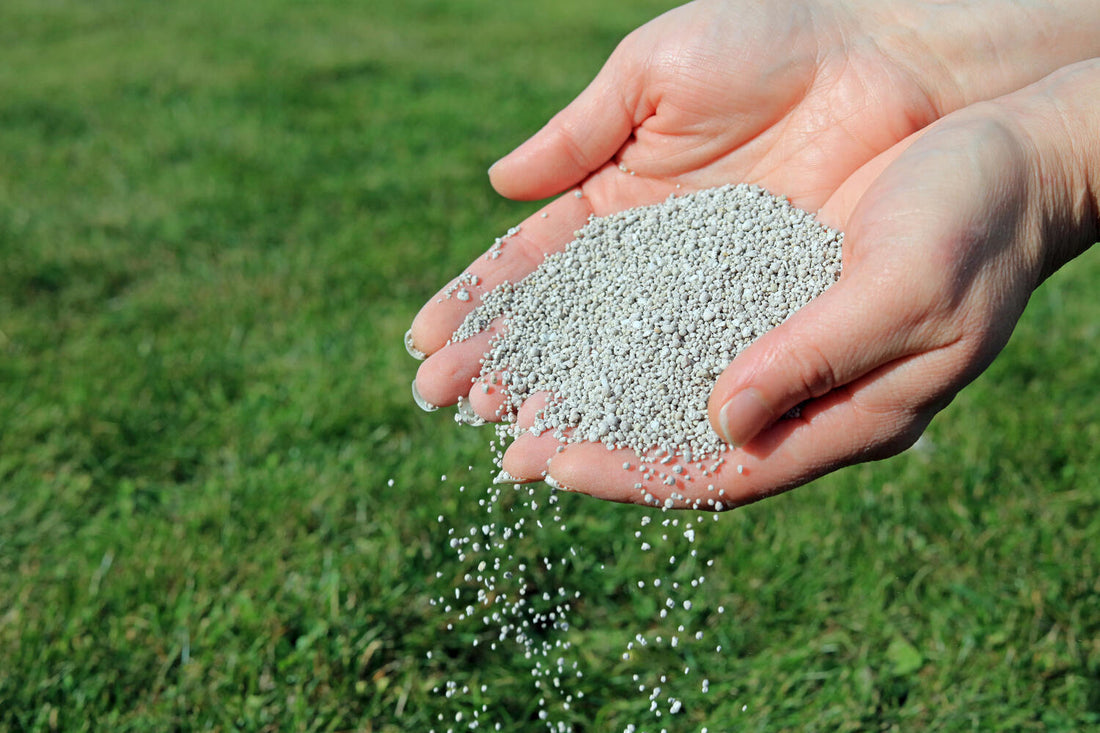If you're serious about stopping weeds before they show up, you've probably asked: how long does barricade pre emergent last? And you should.
Barricade is a top-tier pre emergent herbicide trusted by turf professionals nationwide—and when applied correctly, it delivers long-lasting, consistent control.
But even the best product can fall short if used incorrectly or mistimed.
At Lawn Synergy, we work with homeowners who expect more. More performance. More transparency. More support.
That's why we take professional-grade products like Barricade, enhance them with nutrients, and package them for DIYers who are done guessing.
In this guide, we'll break down how Barricade works, how long it lasts, and what you can do to make sure every application counts.
What this article covers:
- What Is Barricade Pre-Emergent and How Does It Work?
- How Long Does Barricade Pre-Emergent Last?
- Factors That Impact Longevity
- Application Timing and Seasonality
- How to Maximize Barricade's Effectiveness
- When and Why to Reapply Barricade
- What to Expect After Application
- Compatibility with Other Lawn Treatments
What Is Barricade Pre-Emergent and How Does It Work?
Key Features of Prodiamine-Based Weed Control
Barricade's active ingredient is prodiamine, a powerful pre-emergent herbicide used across golf courses, high-end estates, and commercial landscapes.
It's known for its long residual control and low application rate. Once applied and watered in, it forms a barrier in the soil that prevents weed seeds from developing roots and shoots.
How It Prevents Weed Germination, Not Growth
Barricade doesn't kill existing weeds—it blocks germination. That's a key distinction.
It must be applied before soil temperatures reach weed-germination levels (typically around 55°F). It interrupts cell division in seedlings underground, keeping them from ever breaking the surface.
How Long Does Barricade Pre-Emergent Last?
Average Longevity in Lawns and Landscapes
So, how long does barricade pre emergent last in real-world lawn care? With proper application, it provides up to 6 months of weed control.
That makes it one of the longest-lasting pre-emergents available. For many homeowners, two applications per year—spring and fall—are enough to cover the full season.
Duration Based on Application Rate and Soil Conditions
Longevity is influenced by how much product is used and your soil's condition. A higher label-approved rate delivers extended control, especially in high-pressure weed zones.
But lighter applications (especially in sandy or fast-draining soil) may break down faster. Always match the application rate to your region, grass type, and weed pressure.

Factors That Impact Longevity
Soil Type, Temperature, and pH
Barricade breaks down more quickly in sandy soils and slower in clay-rich or compacted soils. Soil temperature affects how quickly the chemical degrades, while pH influences absorption.
Most lawns fall within the ideal pH range, but if your soil is highly acidic or alkaline, performance can vary. Soil testing is key—and at Lawn Synergy, we help you with that too.
Rainfall, Irrigation, and Ground Disturbance
Proper irrigation helps activate Barricade, but too much water (especially early on) can dilute or wash it away.
Heavy rainfall shortly after application can weaken the barrier. Aeration or aggressive dethatching after application can also break the seal and reduce effectiveness.
Grass Type and Seasonal Application
Warm-season and cool-season grasses both benefit from Barricade, but timing varies. Southern lawns may require earlier spring applications due to faster soil warm-up.
Northern lawns often need a later window and may only need one application per year, depending on conditions.
Application Timing and Seasonality
Best Months to Apply for Spring and Fall Weeds
In spring, apply Barricade before soil temps reach 55°F. That's typically late February to early April, depending on your region.
For fall control, apply in late August to October, before winter annuals like poa annua germinate. Use a soil thermometer to avoid guessing.
Timing Tips for Warm- vs. Cool-Season Lawns
For warm-season lawns (Bermuda, Zoysia, St. Augustine), earlier applications are better to get ahead of rapid spring germination.
Cool-season lawns (fescue, bluegrass, rye) should focus on mid- to late-spring applications and plan for a fall follow-up to control winter weeds.
How to Maximize Barricade's Effectiveness
Proper Mixing and Spreading Techniques
If you're using a granular product, apply with a properly calibrated spreader to ensure even distribution.
For liquid Barricade formulations, use a clean tank sprayer and follow the dilution rates closely. Overlapping coverage helps ensure you don't leave gaps in the weed barrier.
Watering-In Guidelines for Long-Lasting Results
Water the product in with 0.25 to 0.5 inches of irrigation immediately after application.
This step is essential—it activates the herbicide and moves it into the upper soil layer where weed seeds germinate. Skip this step, and the barrier never forms.
When and Why to Reapply Barricade
Recommended Intervals for Reapplication
For extended control, reapply every 5 to 6 months based on the application rate and climate.
In high-pressure areas or regions with long growing seasons, two treatments per year will maintain continuous protection.

How to Maintain a Continuous Weed Barrier
Apply the next round of Barricade before the previous application breaks down.
Watch for soil temps rising toward 50°F in spring and falling toward 70°F in fall. Timing reapplications around those markers helps ensure overlapping protection.
What to Expect After Application
Visible Signs It's Working (or Not)
The most reliable sign that Barricade is doing its job is the absence of weeds—especially during peak germination periods.
If your lawn stays clean while neighboring yards start sprouting crabgrass or poa annua, your application was likely well-timed and effective.
A consistent, uniform turf surface with no random patches or thin areas also indicates that weed competition has been successfully suppressed.
On the other hand, if you begin to see clusters of weeds emerging—particularly in common problem areas like along sidewalks, driveways, or low-lying sections—that may be a signal something went wrong.
Spotty breakthrough is often caused by missed coverage during application, improper calibration of your spreader or sprayer, or skipping the crucial watering-in step.
Timing errors are another major factor; if the product was applied too late (after germination had begun), Barricade won't be able to prevent those weeds from establishing.
Monitoring the lawn closely in the weeks following application will help confirm whether the barrier is intact.
If only certain areas show weed growth, evaluate those zones for poor soil contact, slope-related runoff, or compaction.
A properly applied and activated pre-emergent should result in a noticeably cleaner, more even lawn compared to untreated properties.
Monitoring Lawn Health Over Time
With Barricade and Lawn Synergy's nutrient-enhanced formulas, you should see improved turf density, stronger color, and reduced weed competition.
Fewer weeds means your grass can thrive without fighting for space or nutrients.
Compatibility with Other Lawn Treatments
Can You Fertilize After Using Barricade?
Yes, you can fertilize after applying Barricade—and in most cases, it's actually beneficial.
Pre-emergent herbicides like Barricade don't interfere with a lawn's ability to absorb nutrients, so applying fertilizer afterward supports healthy growth and turf density.
For best results, wait a few days after applying Barricade and make sure it has been properly watered in.
Once the pre-emergent barrier is in place, follow your regular fertilization schedule based on your grass type, season, and soil needs.
This combination of weed prevention and nutrient support helps maintain a strong, resilient lawn.

Overseeding and Reseeding Timing Considerations
Because Barricade blocks seed germination, avoid applying it before overseeding or reseeding.
Wait at least 8 to 12 weeks after application (or follow the label's interval) before planting new grass seed. Otherwise, you'll prevent your grass from growing just like you would weeds.
Conclusion
So, how long does barricade pre emergent last? With proper application and timing, you can expect up to 6 months of weed control from a single treatment—making it one of the most effective tools in any homeowner's lawn care arsenal.
At Lawn Synergy, we make it easy to get those results with professional-grade Barricade-based products, enhanced nutrients, and real support that goes beyond the label.
Whether you're just getting started or looking to upgrade your lawn care system, we're here to help you do it right—with zero guesswork.
Start your weed-free season with Lawn Synergy—professional grade support and products made for homeowners who want perfect results.
Looking for more answers? Check out our guides on how long does pre emergent last and can i put pre emergent on wet grass for more information!
If you want to learn more, check out these articles below
-
Does Pre Emergent Work
- Is It Too Late for Pre Emergent
- What Is a Pre Emergent?
- How Do Pre Emergent Herbicides Work?
- Pre Emergent Herbicide List
- Pre Emergent vs Post Emergent
- What Is Pre Emergent for Lawns?
- Best Pre Emergent
- Best Pre Emergent for Lawns
- Best Pre Emergent for Bermuda
- Best Pre Emergent for St Augustine
- Best Pre Emergent for Centipede Grass
- When to Apply Pre Emergent
- When to Apply Pre Emergent in Texas
- When to Apply Pre Emergent in Fall

